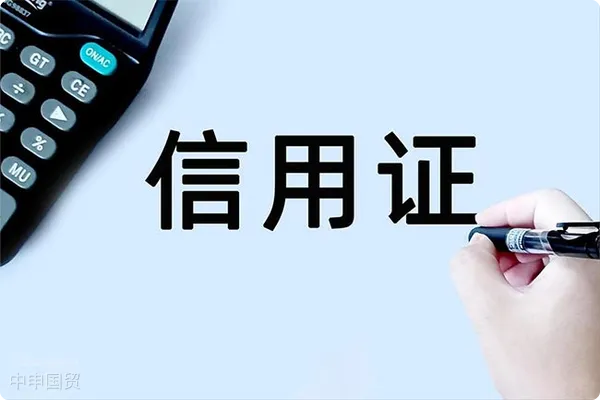- Shanghai Zhongshen International Trade Co., Ltd. - Two decades of trade agency expertise.
- Service Hotline: 139 1787 2118
Relevant Introduction
L/CHow many types are there? Classification of Letters of Credit, How many types of letters of credit are there, and how to distinguish between them. Below is a detailed explanation.

Based on whether shipping documents are attached to the letter of credit, they are divided into:
(1) Documentary Credit
A documentary credit is a letter of credit that pays against drafts or documents. The documents here refer to those indicating ownership of the goods (such as bills of lading) or proving the delivery of goods (such as railway bills, airwayAir Transportationbills, parcel receipts).
In international trade payments, most transactions use this type of letter of credit.
(2) Clean Letter of Credit
A clean credit is a letter of credit that does not require documentary payment and has no attached shipping documents. Banks may also require the beneficiary to attach non-shipping documents, such as invoices and advance lists, when paying under a clean credit.
Based on the responsibilities of the issuing bank, they can be divided into:
(1) Irrevocable Letter of Credit.
A letter of credit issued within its validity period that cannot be unilaterally modified or canceled without the consent of the beneficiary and relevant parties.
(2) Revocable Letter of Credit.
A letter of credit that the issuing bank can revoke at any time without the consent of the beneficiary or relevant parties. The letter of credit should clearly state that it is revocable.
According to the latest regulations, banks cannot issue revocable letters of credit.
Based on whether there is another bank guaranteeing payment, they can be divided into:
(1) Confirmed Letter of Credit
A letter of credit issued by the issuing bank that guarantees another bank will fulfill its payment obligation for documents that comply with the credit terms. The bank that verifies the letter of credit is called the confirming bank.
(2) Unconfirmed Letter of Credit
A letter of credit issued by the issuing bank that has not been verified by another bank.
Based on the payment time, they can be divided into:
(1) Sight Letter of Credit.
A letter of credit where the issuing bank or paying bank fulfills its payment obligation according to the credit terms upon receiving the draft or shipping documents.
(2) Deferred Payment Letter of Credit.
A letter of credit stating that the issuing bank or paying bank will fulfill its payment obligation within a specified period after receiving the credit documents.
(3) Usance Letter of Credit Payable at Sight.
A letter of credit that requires the beneficiary to draw a term draft to be discounted by the paying bank, with the issuer bearing all interest and fees. For the beneficiary, this type of credit is effectively received at sight, and the letter of credit includes a usance credit payable at sight clause.
Based on whether the beneficiarys rights can be transferred through the letter of credit, they can be divided into:
(1) Transferable Letter of Credit.
The beneficiary of a letter of credit (first beneficiary) is responsible for authorizing, extending, underwriting, or negotiating payment with the bank (collectively referred to as the remitting bank) or the bank that issues the letter of credit. You can apply for a letter of credit specifically authorized for use by a remitting bank in China, transferring all or part of the letter of credit to one or more beneficiaries (secondary beneficiaries), and it can be freely traded. The letter of credit must be explicitly marked as transferable by the issuing bank and can only be transferred once.
(2) Non-transferable letter of credit.
A letter of credit where the beneficiary cannot transfer the rights under the letter of credit to others. If the letter of credit does not indicate transferable, it is a non-transferable letter of credit.
Revolving letter of credit.
This means that after the letter of credit is used in whole or in part, it is reset to the original amount and can be reused for a specified number of times or until a specified amount is reached. It is commonly used for batches of uniform shipments. In the case of a revolving letter of credit, the specific method for restoring the original amount is as follows:
(1) Automatic revolving. After a certain amount is used up in each period, it can automatically reset to the original amount without waiting for notification from the issuing bank.
(2) Non-automatic revolving. In each period, after a certain amount is used up, you must wait for notification from the issuing bank to reset the letter of credit to the original amount.
(3) Semi-automatic revolving. This means that within a certain number of days after a specified amount is used up, the issuing bank will not issue a depreciation notice, and the original amount will automatically be restored from the nth day onward.
Reciprocal letter of credit.
Represents two letters of credit where the applicants mutually issue them with each other as beneficiaries. The amounts of the two letters of credit are the same or nearly equal, and they can be issued simultaneously or sequentially. Primarily used for barter, processing trade, or compensation trade.
Back-to-back letter of credit.
Also known as a counter letter of credit, it refers to a situation where the beneficiary requests the advising bank of the original letter or another bank to reissue a similar letter of credit based on the original one, and it can only be issued under an irrevocable letter of credit. Back-to-back letters of credit are typically issued by intermediaries reselling others goods or when trade cannot be conducted directly between two countries.import and exportIn such cases, trade is transferred through a third party. The amount (unit price) of the original letter of credit must be greater than that of the back-to-back letter of credit, and the delivery period of the back-to-back letter of credit must be faster than that specified in the original letter of credit.
Advance payment letter of credit.
The issuing bank (advising bank) authorizes the advance payment of all or part of the letter of credit amount to the beneficiary, with the issuing bank guaranteeing repayment and bearing the interest. The issuing bank pays first, the beneficiary submits documents later, and the beneficiary pays afterward. A usance letter of credit works the opposite way. Advance payment letters of credit are paid against clean drafts, and the recipient must attach instructions to the letter of credit for supplementing necessary documents. When shipping documents are delivered, the paying bank deducts interest and pays the remaining balance.
Standby letter of credit.
Also known as a commercial paper credit or guarantee credit. Represents a commitment by the issuing bank, at the request of the applicant, to make certain arrangements for the beneficiary. That is, the issuing bank guarantees that if the applicant fails to fulfill its obligations, the beneficiary has the right to demand a refund from the issuing bank, provided the beneficiary claims default under the terms of the standby letter of credit. It is a way for the beneficiary to obtain compensation if the applicant defaults.
Negotiation letter of credit.
A letter of credit that requires another bank to purchase drafts and/or documents. The beneficiary can present it to the designated bank or another bank for negotiation.
Generally, since the issuing bank and the beneficiary are in two different countries, it is cumbersome for the beneficiary to request payment from the issuing bank.
The beneficiary can request a local bank (negotiating bank) to verify the deposit in advance, which facilitates financing for the exporter.
The advantage for the applicant and the issuing bank is that payment is not required until the matching documents arrive at the window, and the final verification of document matching is done by the issuing bank. The issuing bank may consider the documents sent by the negotiating bank as valid and refuse payment if discrepancies are found.
Related Recommendations
? 2025. All Rights Reserved. Shanghai ICP No. 2023007705-2  PSB Record: Shanghai No.31011502009912
PSB Record: Shanghai No.31011502009912










